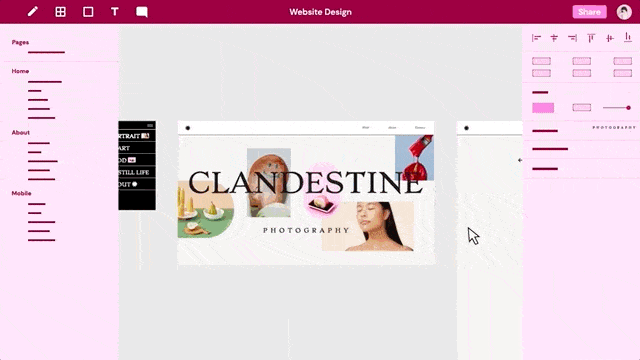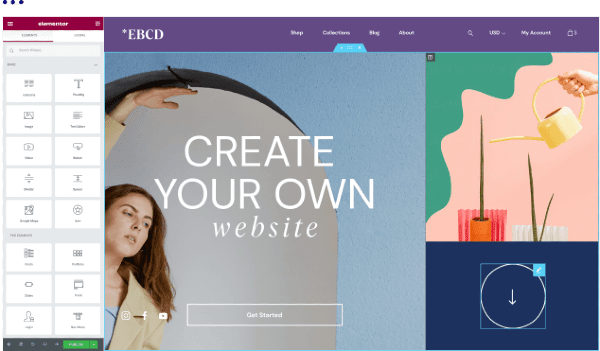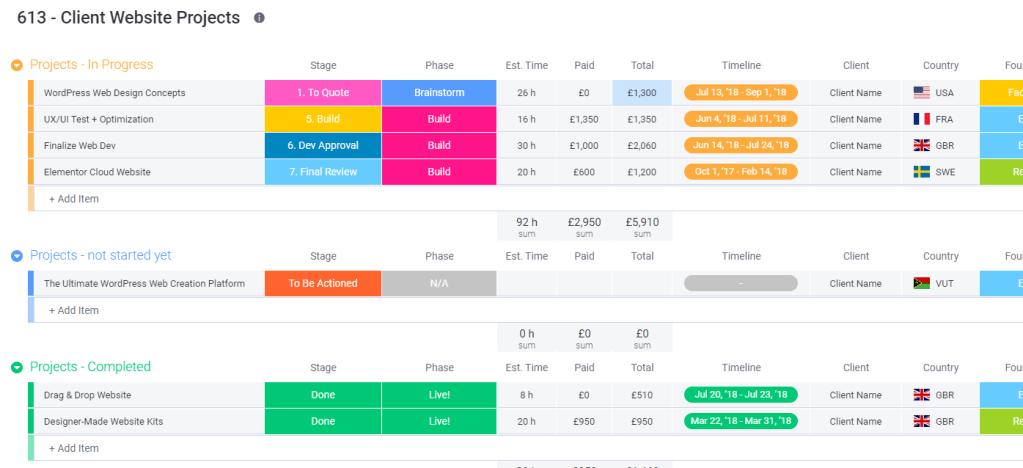Although it may seem like we are in the midst of a web creation era, we only see the tip of the iceberg. In recent years, there has been a rapid increase in Content Management Systems (CMS) for managing the creation and modification of digital content on websites. Today, the CMS market is valued at $44 billion and is projected to grow in the coming years. Over the past decade, we have seen an increase of nearly 2,000% in the number of active websites.
Website projects have different characteristics and challenges because the needs and requirements are often subjective. This makes the need for alignment and communication essential. In this article, we’ll cover the fundamental steps of the web creation process, present industry trends, and show you how deploying a project management platform can streamline your business’ workflow.
Web creation businesses in the age of remote work
Today, most businesses are increasingly adopting a remote work structure. When looking for talent or seeking out projects, you’re no longer bound to the same building or limited to the same time zone. What’s more, the landscape of web creation tools and skill sets is vast and diverse with many websites being created via end-to-end website solutions such as Elementor Cloud Website.
The ability to keep up with the creative demands of the ever-changing virtual landscape cries out for a flexible, user-friendly project management system built for scale. A workflow built for functional website project management, seamless multi-platform integration, and wrapped in a smooth, intuitive interface.

From short-term projects to long-term relationships
Rather than simply building websites and handing them over, Web Creators now manage, optimize, customize, personalize, and maximize ROI for clients. The time frame is no longer weeks or months. The time frame now spans years and decades. The relationship between a Web Creator and a client can last a lifetime today. A relentless focus on results leads to a constant need for better time and resource management. Websites must engage and convert to fulfill their purpose.
Keeping track of all the project’s moving parts enables deadlines to be met, objectives to be delivered, and contracts to be fulfilled.

Project management platforms’ role
The key to a successful web creation project is bringing together your employees, contractors, project management tools, and systems to prepare how you’re doing to deliver web creation services. In other words, clarity.
No one should be expected to work 24/7, but there’s one thing that can—your project management software! monday.com works for every type of team, so everyone can use the same app to plan, organize, and collaborate. You’ll be able to streamline your work with convenient integrations with your favorite tools like Figma, Google Drive, Adobe Creative Cloud, and Slack.
You can also choose from hundreds of pre-made and customizable templates from the monday.com Template Center. Plus enjoy features like:
- 37+ integrations
- 11+ views
- 34+ columns
- 108+ apps
- 24+ widgets
The 6 steps of web creation

When a web creation process is fully clarified and communicated well throughout the entire project, web creators will have more satisfied clients, less work, and far fewer headaches as the project progresses. The final result will also mean a much better website — the goal of every stakeholder.
Now, let’s look at the six key steps to a professional web creation process to lead to the best possible results.
1. Brainstorming
Without understanding the project’s goals, it’s virtually impossible to complete a successful website project. When the specific goals of a website project are written down, they are automatically more tangible and actionable. This is where web creators work with clients to determine what goals the new website needs to meet. i.e., what its purpose is.
This can also include brainstorming tentative options before presenting them to the client. Sometimes this is even done to win the contract before the contract is signed and the official project kicks off.
2. Conception
Once the website’s goals are determined, the project’s scope can be defined such as the web pages and features the website requires to accomplish its goal, plus the timeline for building those out. Thus, spending a generous amount of time in this process stage is critical to the project’s success.
This is where the website is crafted and takes shape. The virtual skeleton model of the website leads to the wireframe and can be created using tools such as Figma. For better cross-functional collaboration, you can also use Figma developer handoff. Permissions to suggest and edit can be managed within each file, allowing for faster communication.
3. Review
Now that a bigger website picture is gathered, content for individual pages can be created. It’s important to keep search engine optimization (SEO) in mind to ensure pages are focused on a single topic. It’s essential to attract genuinely interested visitors to what the website offers. To make this step faster, platforms such as Elementor integrate seamlessly with YoastSEO or SEOPress while monday.com integrates with Semrush.
It’s critical to have actual content to work with for the next stage: the sitemap, which defines how the content and features that were defined will interrelate. Sitemaps are outlines of the structure of website pages. This is the semi-finished version, minus the website’s functionality. It is the designers’ domain before the other moving parts come into play.
4. Optimization
After the website architecture and foundational content are in place, work on the visual brand can begin. With some clients, this information is already well-defined, yet in other instances, Web Creators will need to define the visual brand from start to finish. Tools such as style tiles, mood boards, and element collages can all help.
Now that the pages are complete and defined as how they display to a site visitor, it’s time to make sure the site works. Identify all user experience issues, from simple broken links to user interface issues, by browsing the site manually and using automated site crawlers. User feedback and research are key parts of any successful launch. This is where UX/UI is tested and optimized. The website is finetuned and perfected to create a seamless experience. To further increase positive user experience, be sure to check that your site is up to speed.
5. Publication
Once everything’s working smoothly, it’s time to plan and execute the site launch! This should include preparing both launch timing and communication strategies — i.e., when the launch will take place and how the world will know. Remember to also filter all incoming feedback into your project management system to maximize the short but critical initial launch period.
6. Maintenance
Once a website is launched, it’s time to measure its performance. Comparisons can be made based on various factors and analytics tools like the seamless reporting and custom dashboards of monday.com’s Work OS. Previous website versions can soon be tested. As a website is always a work-in-progress, it should continually evolve to meet changing demands. It is imperative to educate potential clients on the long-term responsibilities of owning a website. Updating and maintaining a website is a necessity.
With a dedicated task list in the website project management software, every specialist has a detailed view of their workload each day and how it fits into the bigger picture and helps creative teams in more ways than one:
- They are free from administrative burdens
- They stay on track with priorities, due dates, and task dependencies
- Tasks can be assigned and progress tracked to provide updates to stakeholders
Invest in the right tools for seamless web creation
Following these six steps by harnessing an all-in-one web creation service like Elementor Cloud Website along with the intuitive project management power of monday.com will ensure every client deadline is met and every website project is managed smoothly. This enables both web creators and web creation businesses to scale as demand for their services grows seamlessly.

